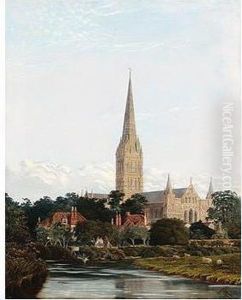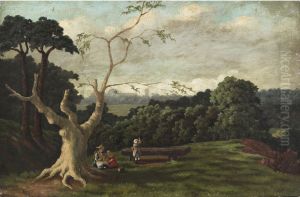Charles Fullwood Paintings
Charles Fullwood was a British artist known for his distinctive contributions to watercolor painting and engraving in the late 19th century. Born in 1842, Fullwood's artistic career emerged during a period of significant evolution in the British art scene, coinciding with the burgeoning Arts and Crafts Movement and the aesthetic shifts towards realism and naturalism.
Fullwood's early life and education in the arts remain somewhat obscured by the passage of time, but it is evident from his work that he received formal training, likely at one of the prestigious art institutions in Britain. His style, characterized by meticulous attention to detail and a profound appreciation for the British landscape, suggests an academic grounding that was typical of the era.
Throughout his career, Fullwood became well-known for his landscapes and city scenes, capturing the essence of rural and urban Britain with a delicate precision and a romantic sensibility. His work often reflected the tranquility of the English countryside, the bustling life of London streets, and historic towns, rendered with a soft palette and a masterful use of light and shadow. This was a time when the industrial revolution was reshaping the country, and Fullwood's scenes provide a valuable contrast between the pastoral idylls and the emerging urban landscapes.
He exhibited his work at various prestigious venues, including the Royal Academy and the Royal Watercolour Society, gaining recognition and accolades for his contributions to British art. Despite the popularity of oil painting, Fullwood remained committed to watercolors and engravings, mediums he believed offered a greater intimacy and immediacy in capturing the fleeting moods of nature and human environments.
Charles Fullwood's legacy is that of a quintessentially Victorian artist, whose work encapsulates the changing face of Britain during one of its most dynamic periods. His death in 1896 marked the loss of a significant talent, but his paintings and engravings continue to be appreciated for their historical value and their beauty, offering insight into the landscape and ethos of 19th-century Britain.



